
Gallery: Eid in the Nuba region of Egypt
Published date: 25 September 2015 16:32 BST
|
Last update: 9 years 2 months ago
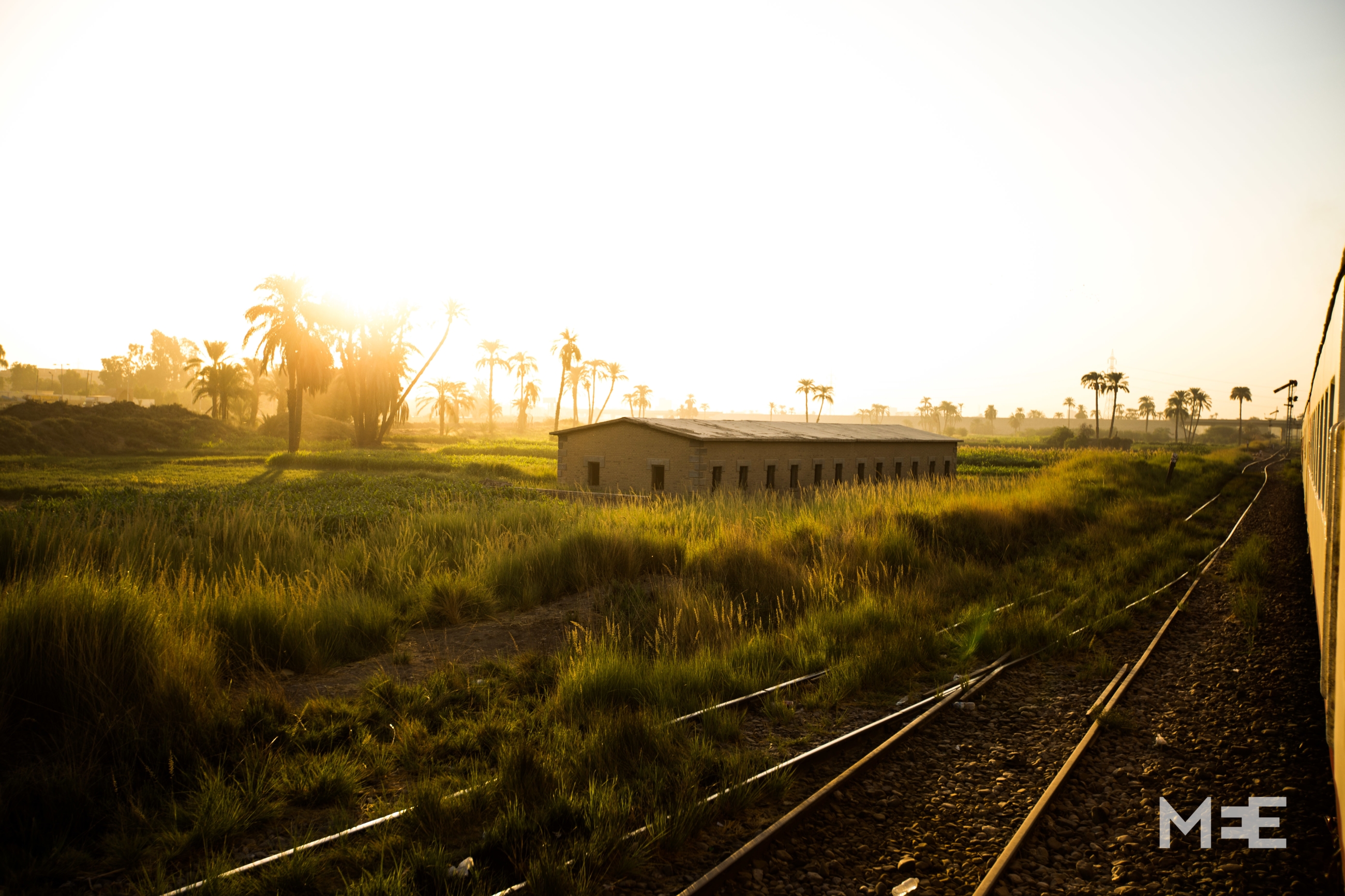
The distance between Cairo and Nuba is over 900 kilometers and so Egypt’s railway system remains the most convenient mode of transport between the two for visitors and Nubians, even for those who have cars (MEE/Omer Khalid)
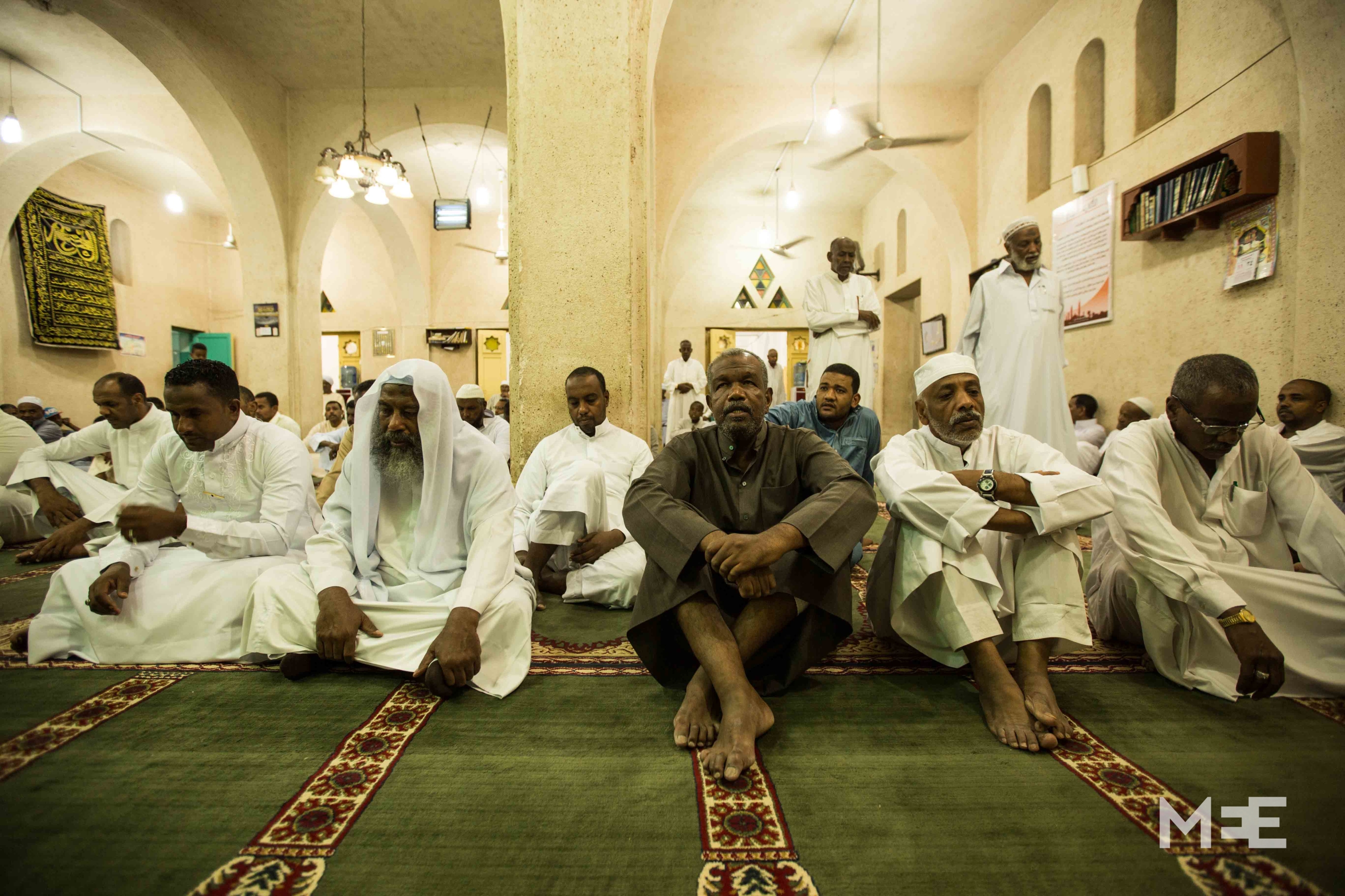
Nubian men sit and relax for a few minutes before the morning Eid prayers begin in the village’s white mosque. All mosques in the area are painted white to help with the heat. Abo Hour village, Nuba region, Aswan (MEE/Omer Khalid)

Nubians leave the mosque after performing Eid prayers in the village’s white mosque. Abo Hour village, Nuba region, Aswan (MEE/Omer Khalid)

Young Nubian children play after performing Eid prayers in the village’s white mosque. Abo Hour village, Nuba region, Aswan. (MEE/Omer Khalid)
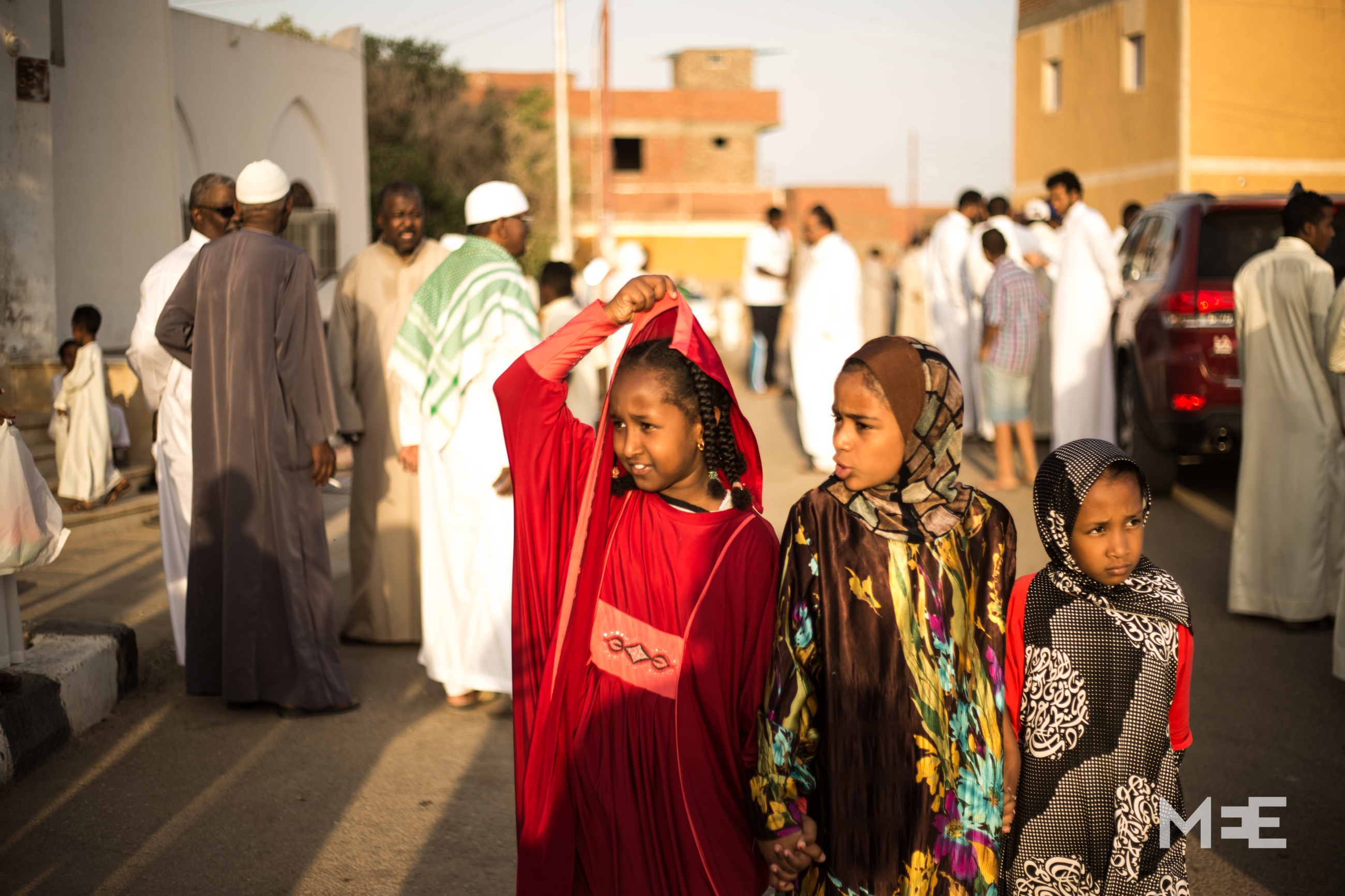
Three young Nubian girls leave the village mosque after performing Eid prayers. Abo Hour village, Nuba region, Aswan. (MEE/Omer Khalid)

This greeting circle is part of a Nubian tradition where they all move from person to person, greeting one another (MEE/Omer Khalid)
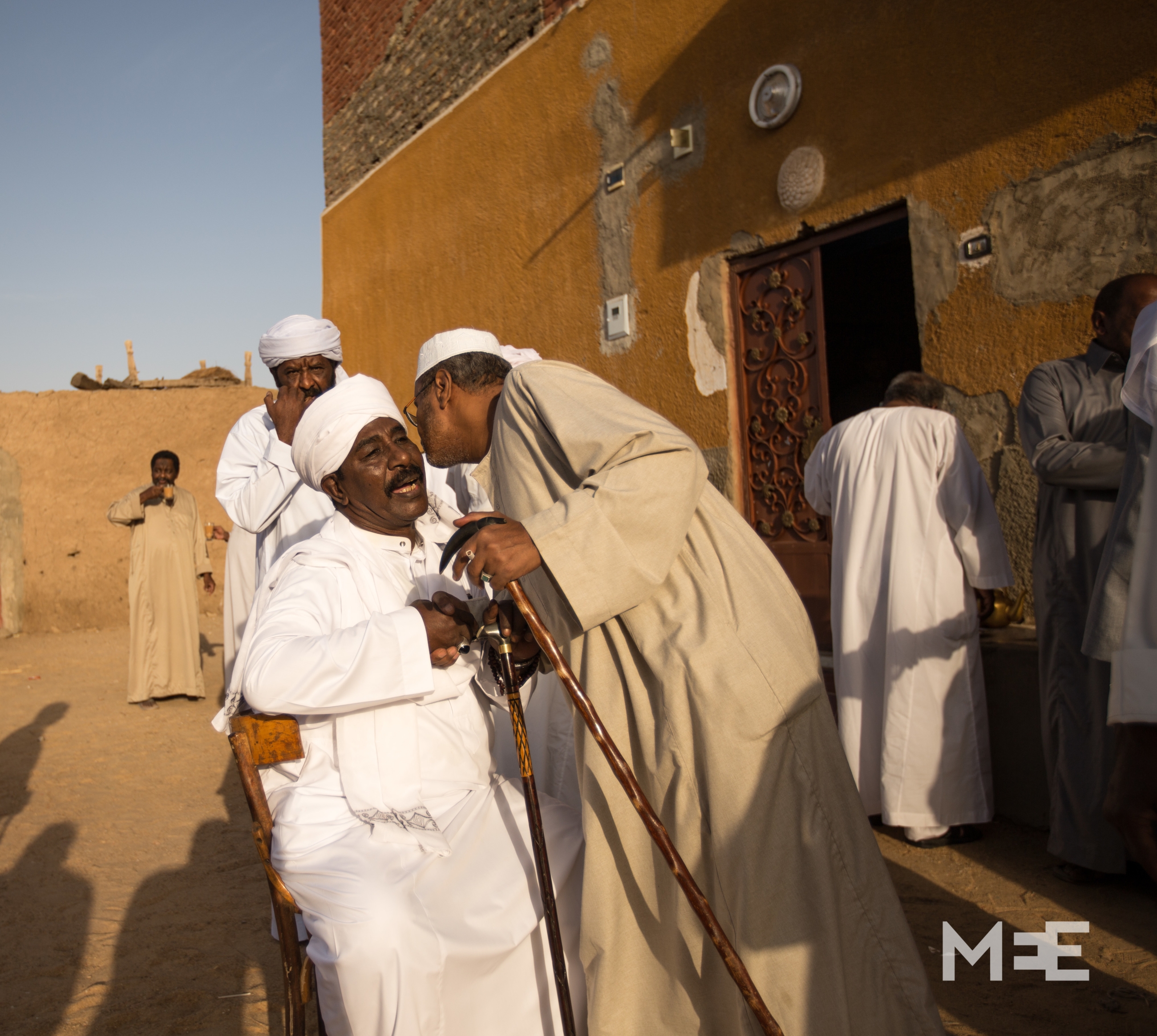
Nubians greet each other after performing Eid prayers in the village mosque. Religious occasions like Eid al Adha often remain the Nubians only chance to meet and gather as most of them have moved to Cairo in search for a better life, job opportunities, education etc.. Abo Hour village, Nuba region, Aswan (MEE/Omer Khalid)

After Eid prayers, each house sets out a table in front of it with a jug full of milk mixed with tea for the passers by to drink. This is part of an old Nubian tradition (MEE/Omer Khalid)
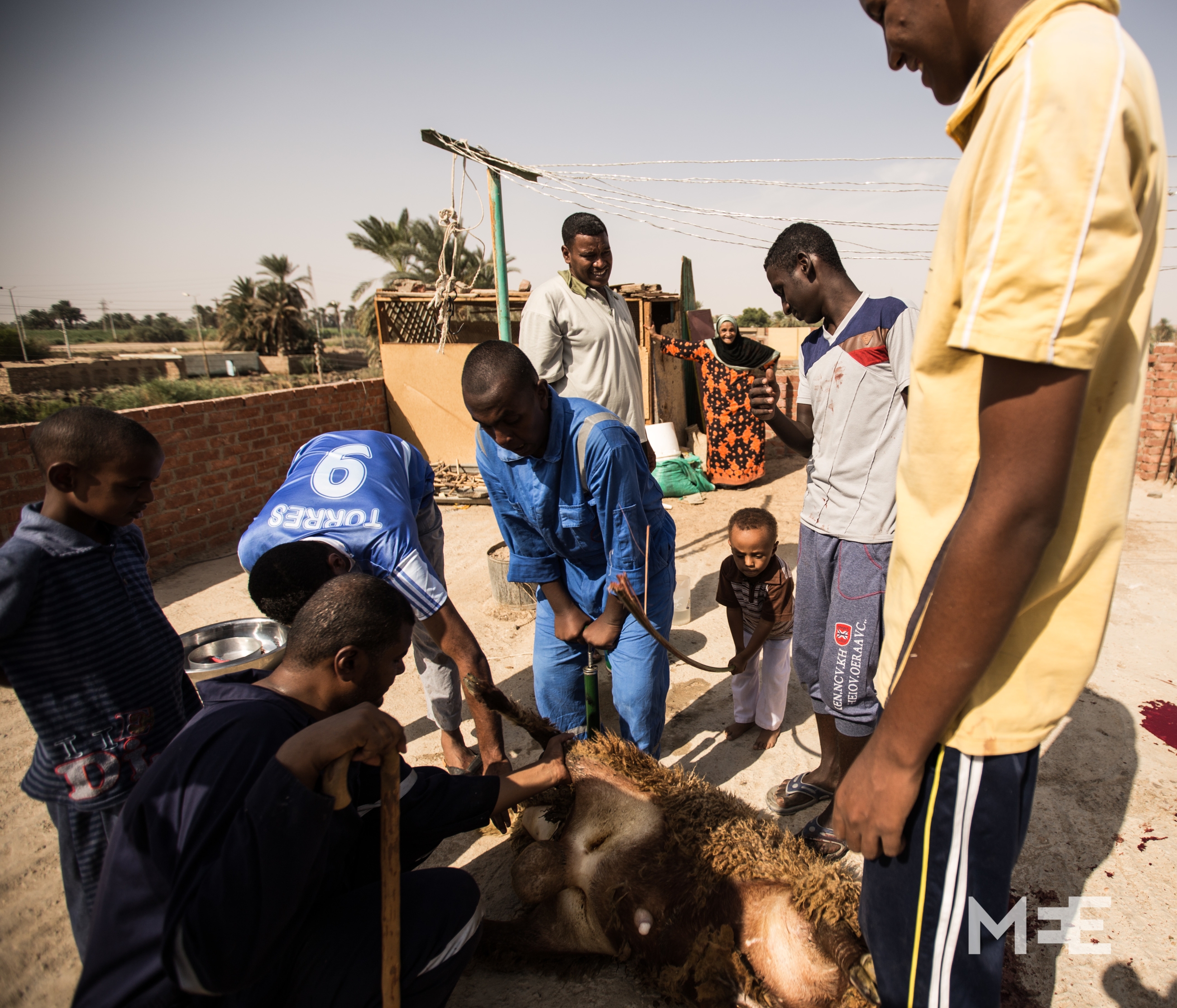
A Nubian family takes part in the Adhia (slaughter of a sheep) on the roof of their house. The Adhia is a chance to encourage young children to touch the animals and learn about life, death and food sources. The meat will be cooked and a portion will be shared with neighbours, family and friends and a portion given to the poor (MEE/Omer Khalid)

A Nubian grandmother with her grandson (MEE/Omer Khalid)

A Nubian brother and a sister pause for a photo after performing the Eid prayers. Photographing women is prohibited in Nuba unless they are very young or very old (MEE/Omer Khalid)

It is a tradition for the Nubians to put their hands in the blood of al Adhia (the sheep which has been sacrificed and which will be cooked and eaten and shared with the poor) and to leave a stained hand mark mark on the wall (MEE/Omer Khalid)
Middle East Eye delivers independent and unrivalled coverage and analysis of the Middle East, North Africa and beyond. To learn more about republishing this content and the associated fees, please fill out this form. More about MEE can be found here.

